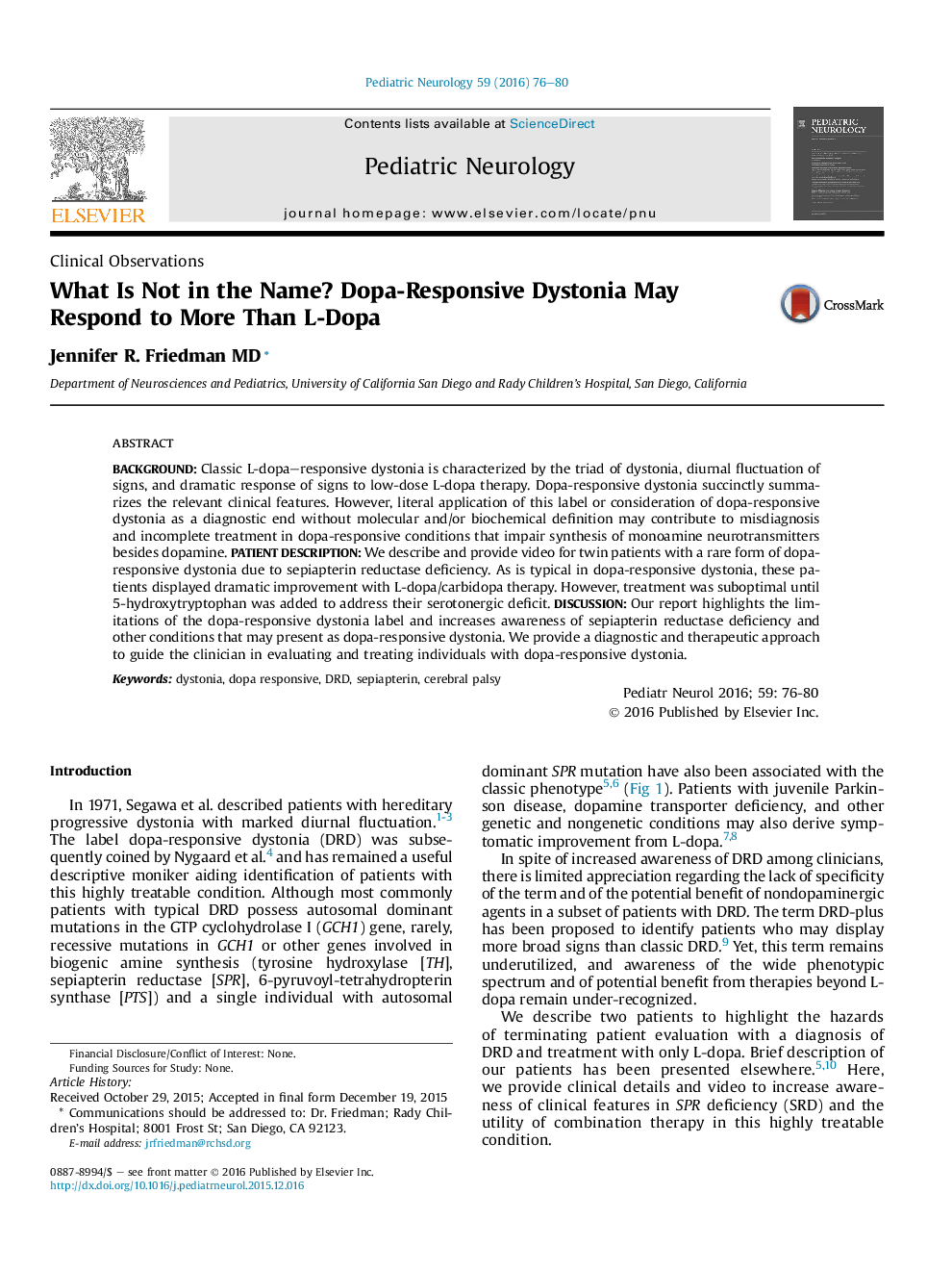| Article ID | Journal | Published Year | Pages | File Type |
|---|---|---|---|---|
| 3084340 | Pediatric Neurology | 2016 | 5 Pages |
BackgroundClassic L-dopa–responsive dystonia is characterized by the triad of dystonia, diurnal fluctuation of signs, and dramatic response of signs to low-dose L-dopa therapy. Dopa-responsive dystonia succinctly summarizes the relevant clinical features. However, literal application of this label or consideration of dopa-responsive dystonia as a diagnostic end without molecular and/or biochemical definition may contribute to misdiagnosis and incomplete treatment in dopa-responsive conditions that impair synthesis of monoamine neurotransmitters besides dopamine.Patient DescriptionWe describe and provide video for twin patients with a rare form of dopa-responsive dystonia due to sepiapterin reductase deficiency. As is typical in dopa-responsive dystonia, these patients displayed dramatic improvement with L-dopa/carbidopa therapy. However, treatment was suboptimal until 5-hydroxytryptophan was added to address their serotonergic deficit.DiscussionOur report highlights the limitations of the dopa-responsive dystonia label and increases awareness of sepiapterin reductase deficiency and other conditions that may present as dopa-responsive dystonia. We provide a diagnostic and therapeutic approach to guide the clinician in evaluating and treating individuals with dopa-responsive dystonia.
